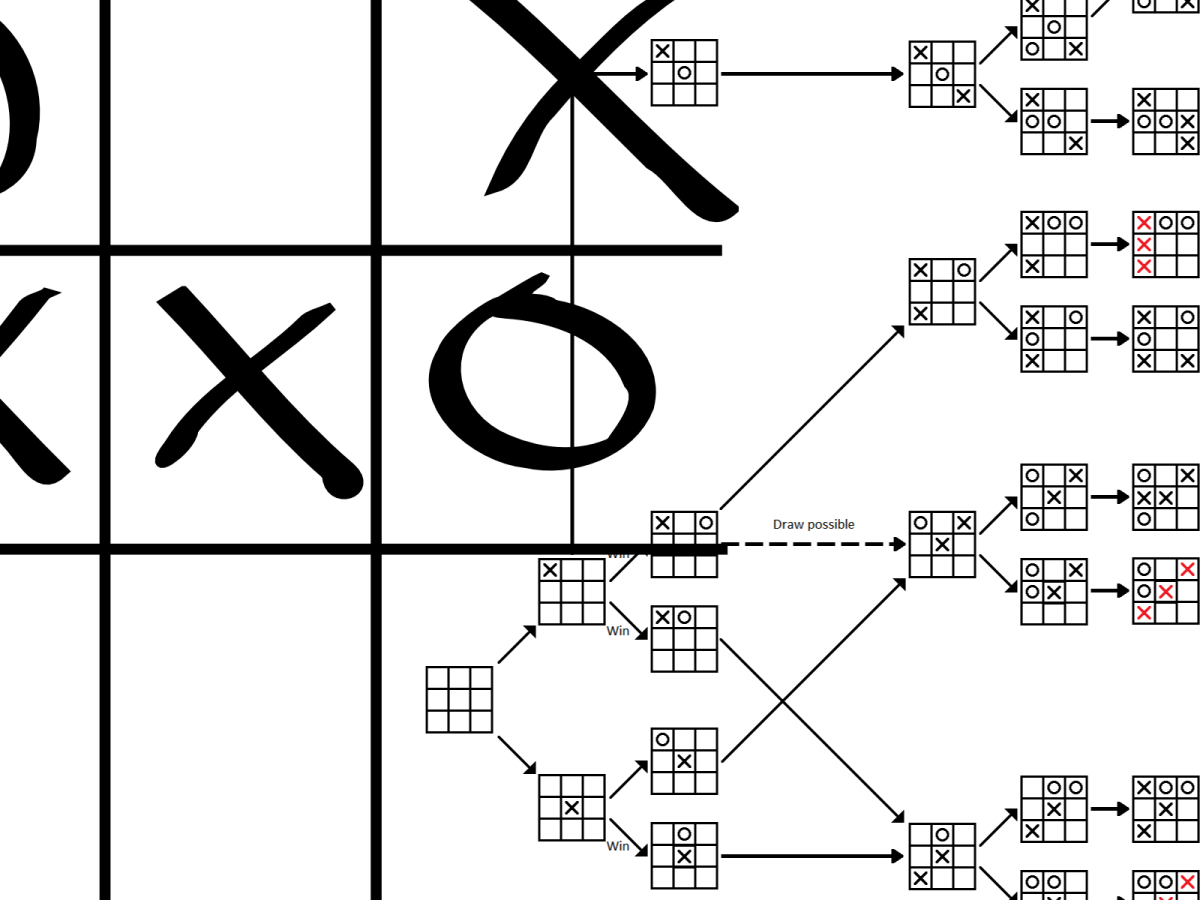In Gaming: The Future’s Language, Richard D. Duke argues that simulations and games are a form of communication suited to conveying the gestalts (the holistic shape and dynamic) of complex systems in abstracted and interactive forms. Abstraction makes these overwhelming and often technical systems comprehensible to non-specialists, and interactivity helps us to conceptualize, through participation, those systems’ true natures.
But games do more than provide diversion or satisfy idle curiosity. Games are tools that help us begin resolving large-scale problems that plague modern societies.
Duke does not explicitly discuss RPGs; Gaming was published in 1974, the same year TSR published the original Dungeons & Dragons. However, TTRPGs fit Duke’s framework, and so they undeniably represent a means of approaching social issues through play.
Gavriel Quiroga’s NEUROCITY is one such RPG premised on the fundamental issues Duke describes. Reading the sourcebook is like peering into a kaleidoscope of dystopian tropes inspired by milestones in the genre: a highly stratified society, devaluation of sexuality and intimacy, blind dependence upon outdated and poorly understood technology, an overbearing surveillance state, drugs as an official tool for pacification, a functionally omnipotent AI that refuses to let you die, and many others.
But NEUROCITY aims higher than just synthesizing those narrative components for aesthetic purposes. As Quiroga writes in his epilogue, “my intention was to create something that I knew in literature and cinema but had not yet found in role-playing games: An extreme existential experience that has as a central theme the struggle between the human spirit and the omnipotent technocracy of a brutal system. … Behind Neurocity lies a sincere preoccupation about the direction our world is taking. Hopefully this small contribution will awaken some concern and raise awareness.”
In other words, Quiroga’s project takes the problems that dystopian media foreground and deploys them as the basis for precisely the sort of game Duke describes. As a form of complex, interactive media, NEUROCITY allows players to explore pressing modern problems, inhabit and understand them, and begin using their own personal knowledge to develop strategies for resistance.
Problems of Technology and Complexity
A note on stylization:
NEUROCITY — the book
NEUROCITY — the game
Neurocity — the setting
Duke’s argument is motivated by the urgent need for personal autonomy within larger social structures governed by cyclopean institutions. He traces this struggle from the Magna Carta through the Declaration of Independence and beyond, but he qualifies these gains under the impending threat of “the technical aristocracy, the high priests of 1984.”
In modern society, individuals lack the ability to address issues arising at the intersection of technology and complex reality. Half of the problem is the lack of access to decision-making conversations, and that obstacle emerges from the other half: lack of an adequate language that enables us to conceptualize and engage the dysfunctions plaguing everyday life. Duke writes, “Modern circumstances place demands on a representative system that cannot be met by traditional modes of communication.”
We are caught between the proverbial rock and hard place of complexity and technology, which together govern the lives of people who aren’t able to fully understand them—at least, not in a way that would allow us to meaningfully participate in resolving the problems they incur.
“Management problems of modern western society (and in a particular sense of the great urban centers) have created a modern equivalent of the biblical Tower of Babel,” Duke writes. “Now the high priests of technology speak only to the high priests of technology; God is dead, and the citizen, no matter how strongly motivated, can hardly get a word in edgewise.”
He summarizes: “Society’s failure to respond to individual need is, in large part, a communication problem.”
The failures of traditional communication are partially failures of comprehension—understanding the matters at issue—but also failures of form. Duke characterizes games as non-hierarchical multilogues that enable people to understand complex problems and begin participating in solution-oriented discussions. But policy discussions occur in types of discourse—writing, film, images, and other fundamentally dialogic modes—that are sequential. Linear communication cannot capture and convey the true nature of the issues and their context.
“Because of the lack of gestalt communication modes and therefore the lack of an integrated or holistic perspective,” Duke writes, “society’s management of such complexity has consisted of four concurrent dimensions: false dichotomies, professional elitism, increasing dependency on technology, and gigantism.”
All four of these dimensions intertwine at the heart of NEUROCITY.
Four Dimensions of Neurocity
A dichotomy is a direct, irreconcilable opposition between two terms. In NEUROCITY, the fundamental dichotomy is between socially acceptable and unacceptable behaviors. The former ensures the stability and continuity of Neurocity, whereas even a hint of the latter is construed as a threat to society’s very foundation.
But in true dystopian fashion, unacceptable behavior encompasses what we consider to be basic human values and rights. The game’s motivating idea (Duke calls it a “pulse”) is excavating and reclaiming those rights.
To ensure that doesn’t happen (and thereby safeguarding stasis and survival), Neurocity is governed by the iron will of the supercomputer ISAC, a machine that dictates every facet of human existence from birth to death (and then birth again). This dependence on technology to ensure society’s continuity and stability leads to the problem of gigantism.
Gigantism is the tendency toward bloat and growth to an excessive, detrimental size. In the modern world, the face of gigantism is bureaucracy.
Any complex operation requires people managing specific points in the internal dynamic. However, the bureaucratic perspective is compartmentalized; each worker comprehends (hopefully) their own place in the machine, but they don’t understand how the pieces synergize to constitute the whole. As a result, those pieces frequently don’t work well together, leading to inefficiencies and dysfunctionality.
Bureaucracy in Neurocity is no different. ISAC’s will is carried out by Apostles, Cardinals, Enforcers, and other functionaries who oversee the manual labors of the lower castes. But these characters (as agents of ISAC) aren’t simply managing a bank or a business—they are controlling an entire society and dictating its culture. As a result, dysfunction and inefficiency are at their peak in Neurocity’s “bureaucratic swamp.”
Bureaucracy thrives in hierarchical organization; Deltas and Gammas (workers) report to Betas and Alphas (managers) who in turn report to ISAC (chief officer). This stratification of social value and function necessarily leads to elitism, which is obvious in caste and function. But in Neurocity, it also manifests in the crucial domain of communication.
The upper echelons of Neurocity’s society speak Sygma, a concise and mathematically oriented language. It is a privileged tongue, speakers of which “delight in using it with members of society who have not been trained in its use.”
Many of those lower-caste members speak the more colloquial and subjective subh dialect. The text frequently references subh terms and expressions, such as substituting “slavehouse” for “factory.”
However, while Sygma is described, it is never once demonstrated or quoted. The game denies players access to the privileged discourse, silently situating them in the lower social strata and aligning them with the revolutionary impulse that drives the game’s conflict.
But NEUROCITY does more than call attention to technical elitism through its content. Denial of language is precisely the issue that NEUROCITY addresses through its form as an RPG.
Breakdown of Sequential Communication
According to Duke, traditional modes of communication rely on sequentiality: whether monologue or dialogue, written or oral or visual, communication occurs linearly, proceeding from speaker to spoken-to. This blog post is a perfect example: I’m transmitting a specific sequence of ideas to you, the reader. You can write back in the comments or on social media, but the communication remains linear.
Gaming and simulation, however, enable multiple simultaneous lines of communication to operate concurrently (rather than contiguously). This dynamic demonstrates (instead of merely explaining) the processes of complex systems. By engaging games and simulations, we develop better cognitive models of how things actually work, and we can therefore solve problems of functionality.
Naturally, that’s anathema in Neurocity.
Just past the frontmatter, an epigraph introduces the reader to the game’s setting:
“You know, centuries ago there was something that allowed regular citizens to freely share information through digital networks. Exactly like our Intranet, only without the restricted access, literally for everyone.
“You can imagine how that ended.
“After a few decades we had an information overload and the population ceased to distinguish reality from fiction. Academic authorities were challenged by ignorant people who thought they knew what was best for them. Yeah, right? Absolutely dysfunctional! That’s when the government turned to A.I programs to establish order and … well, that’s what brought us to where we are now.
“I guess it’s for our own good but remember, you must never speak of this.”
This passage immediately confronts the reader with the gaming motifs of networked communication and the capacity for people to challenge institutionalized authority—and it does so from the conformist perspective that accepts the dystopian way as the inevitable way. Just as significantly, it emphasizes problems of sequentiality and the restriction of communication that games are suited to solving.
The book’s first chapter follows, and it opens with a related epigraph from Vitalogy, the “scientific ideological doctrine” of Neurocity: “In the beginning there was Chaos and for centuries man roamed in the darkness and confusion like a lost child.”
This is Vitalogy 1:1—first chapter, first verse, the very beginning of a sequential discourse that cannot help but frame history in sequential terms. This focus on beginnings persists throughout the book, which frequently indicates where characters may find clues about Neurocity’s origin.
The truth about those origins are held until near the end of the text. But instead of a definite origin, the Director (GM) is given possibilities for Neurocity’s origin and true nature. In fulfilling its promise of enlightenment, NEUROCITY implicitly dismantles the illusion of stability and sequentiality in favor of the variability and complexity that characterize RPGs.
Beginnings and Endings
As a mode of communication, gaming doesn’t convey information. Instead, it helps the player develop heuristics—ways of thinking that empower us to solve problems. Games and their heuristics are tools for imagining possible futures.
According to Duke, every game is premised on a problem, and play consists of finding solutions. Games allow us to take up arms against a sea of troubles and, by opposing, end them. NEUROCITY is no different, but it sets its sights not on a second-order facet of technology and complexity but on those core issues themselves.
Dystopian media, by definition, present us with possible futures, but games are unique in allowing us to actively engage with and shape those futures in a safe environment. NEUROCITY encourages us to explore possible futures as well as their possible origins so that we, as citizens, will be better equipped to address those problems. And it does so not to alert us to the dystopian futures we must avoid, but to help us see clearly the dystopian future we’re already living in.
Special thanks to Gavriel for sending me a copy of Neurocity (V2.0)—and even specialer thanks for sending it while I was reading Duke’s book. Watch for his next release, Warpland, which will explore obscurantism and censorship in a grim, psychedelic setting. In the meantime, you can join the ongoing conversation in the Neurocity & Warpland group on Facebook.
Liber Ludorum is entirely reader-funded. Please consider lending your support.
Recent posts
Breakout Con ’24: a retrospective
Impressions of Canada’s largest tabletop gaming convention
Tabula Rasa: a (p)review
An exclusive first look at the groundbreaking rules-minimalist, experience-maximalist TTRPG
Games & Systems
The tradeoff between flexibility and direction, and the pitfalls of thinking about both





